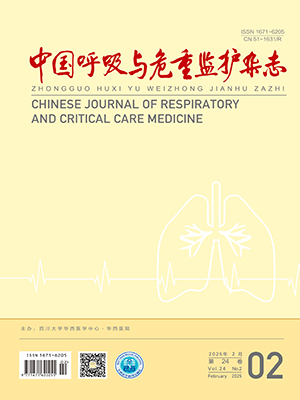| 1. |
Landrum L, Weinrich S. Readmission data for outcomes measurements: identifying and strengthening the empirical base. Qual Manag Heath Care, 2006, 15(2): 83-95.
|
| 2. |
Chan FW, Wong FY, Yam CH, et al. Risk factors of hospitalization and readmission of patients with COPD in Hong Kong population: analysis of hospital admission records. BMC Health Services Research, 2011, 10(11): 186-191.
|
| 3. |
冯金华, 杨婕, 胡艳杰, 等. 外科患者出院 30 d 内非计划性再再入院研究现状及进展. 重庆医学, 2015, 44(26): 3704-3707.
|
| 4. |
Kondrup J, Rasmussen HH, Hamberg O, et al. Nutritional risk screening(NRS2002): a new method based on an analysis of cortrolled clinical trials. Clin Nutr, 2002, 22(3): 321-336.
|
| 5. |
高宁, 郭云霞, 张小云, 等. 肺结核患者营养风险状况及其影响因素的研究. 中华护理杂志, 2014, 49(5): 552-555.
|
| 6. |
中华医学会呼吸病学分会慢性阻塞性肺疾病学组. 慢性阻塞性肺疾病诊治指南(2013 年修订版). 中国医学前沿杂志, 2014, 6(2): 67-80.
|
| 7. |
化前珍. 老年护理学. 北京: 人民卫生出版社, 2013. 2-3.
|
| 8. |
朱跃平, 丁福, 刘欣彤, 等. 老年住院患者营养风险筛查及营养支持状况. 中国老年学杂志, 2013, 33(11): 2609-2611.
|
| 9. |
张晴, 黄娟. 呼吸科住院病人营养风险筛查和营养支持的调查研究. 肠外与肠内营养, 2015, 22(4): 199-201.
|
| 10. |
朱海英, 于常英. 老年住院患者营养风险、营养不良(不足与超重)发生率及营养支持现状. 中国老年学杂志, 2012, 32(10): 2057-2059.
|
| 11. |
黄洁, 李承红. 慢性阻塞性肺疾病营养不良研究进展. 中国老年学杂志, 2016, 36(1): 242-245.
|
| 12. |
聂晓红, 周玲, 熊曙光. 不同临床类型慢性阻塞性肺疾病患者营养状态与炎性因子的研究. 中国呼吸与危重监护杂志, 2015, 14(1): 17-21.
|
| 13. |
骆勇, 贾文钗, 王征. 管饲肠内营养支持治疗对中度慢性阻塞性肺疾病急性加重无创通气患者疗效的影响. 中国呼吸与危重监护杂志, 2012, 11(1): 19-22.
|
| 14. |
Collaborative Research Group of Noninvasive Mechanical Ventilation for Chronic Obstructive Pulmonary Disease. Early use of noninvasive positive pressure ventilation for acute exacerbations of chronic obstructive plumonary disease: a multicentre randomized controlled trial. Chin Med J(Engl), 2005, 118(24):2034-2040.
|
| 15. |
张杰. 家庭健康教育对冠心病人治疗依从性的影响. 中国伤残医学, 2013, 21(4): 389-391.
|
| 16. |
Brooke BS, Stone DH, Cronenwett JL, et al. Early primary care provider follow-up and readmission after high-risk surgery. JAMA Surg, 2014, 149(8):821-828.
|
| 17. |
Feltner C, Jones CD, Cené CW, et al. Transitional care interventions to prevent readmissions for persons with heart failure: a systematic review and meta-analysis. Ann Intern Med, 2014, 160(11):774-784.
|
| 18. |
张莹, 慕广建, 施伟, 等. 老年心力衰竭合并慢性阻塞性肺疾病急性加重患者营养状态与免疫功能相关性分析. 中华老年心脑血管病杂志, 2016, 15(7): 704-706.
|
| 19. |
Silvertein MD, Qin H, Mercer SQ, et al. Risk factors for 30-day hospital readmission in patients≥65 years of age. Proc(Bayl Univ Med Cent), 2008, 21(4): 363-372.
|




